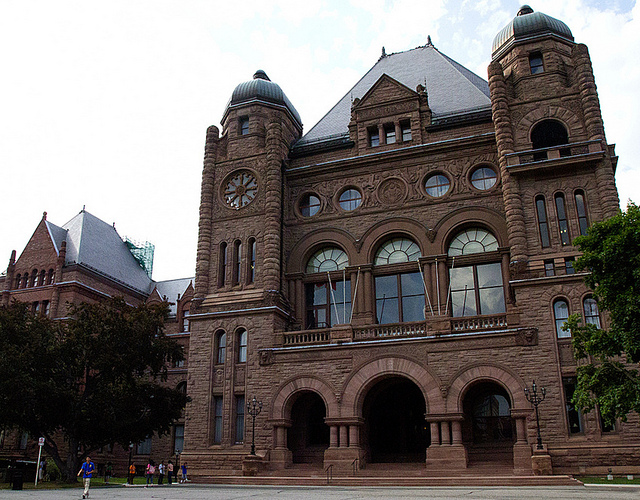Does the Ontario budget address income inequality? Meh. It’s a growing concern in Ontario and around the world. The past 40 years have seen a steady increase in income inequality in Ontario. In fact a new report from the Organization for Economic Co-operation and Development reports that the gap between high- and low-income earners in Canada has grown faster only in the United States.
What in this budget might reverse these trends?
Budget 2014 includes a smattering of investments across the public sector. Everything from social assistance rate increases to tax rebates on food donations, tax increases on Ontario’s highest income earners and investments in extended health benefits for children are on the table. None of these are sea changes, but taken as a whole they are a signal that this government is ready to press the reset button; to move towards ending the damaging austerity agenda that has hampered Ontario’s economic recovery.
This budget commits $2.5 billion over 10 years to a Jobs and Prosperity Fund intended to create high-quality jobs through targeted investments in innovation and productivity, as well as assisting local businesses to “go global.” This strategy follows on the heels of a disappointing increase in the minimum wage that leaves Ontario’s lowest income earners still living in poverty.
No new commitments are made to the youth jobs strategy. Its two years of funding will be assessed at the end of this year and new investments will be considered.
An increase in the Ontario Child Benefit to $1,310 is a move that has been on the books for some time. The budget also commits to indexing the OCB, both the dollar value and the income cut-offs, to inflation starting in 2015. It’s a move that means the cornerstone of Ontario’s first poverty reduction strategy won’t see its value eroded over time.
The budget also gives a nod to some of the public sector’s lowest paid workers by increasing the pay of Early Childhood Educators who are employed in the child-care sector and personal support workers providing valuable and cost-effective care for seniors in their homes.
Individuals receiving social assistance, both ODSP and Ontario works, will receive a 1 per cent increase in their income this year — that’s on par with inflation. Single individuals receiving Ontario Works benefits will see their total income increase $30 per month. It does little to eliminate the deep poverty associated with social assistance in Ontario, but it gets the rates a step closer to the recommended $100/month increase recommended by the province’s own Commission on the Reform of Social Assistance.
500,000 low-income children in Ontario will receive extended health benefits (prescription drugs, assistive devices, vision care and mental health services.)
There is also an additional $485 million for adults with developmental disabilities over the next three years. End of austerity? The government has made steps to implement 80 per cent of the recommendations in the Drummond report, and still claims the title of lowest per capita program spending in the country.
While this budget takes some steps on low-wage work, social assistance and the progressivity of Ontario’s tax and transfer system, there are still many miles to go before Ontario’s income inequality gap begins to shrink.
Kaylie Tiessen is an economist with the Ontario office of the Canadian Centre for Policy Alternatives. Follow her @kaylietiessen
Photo: Alex Guibord/flickr




